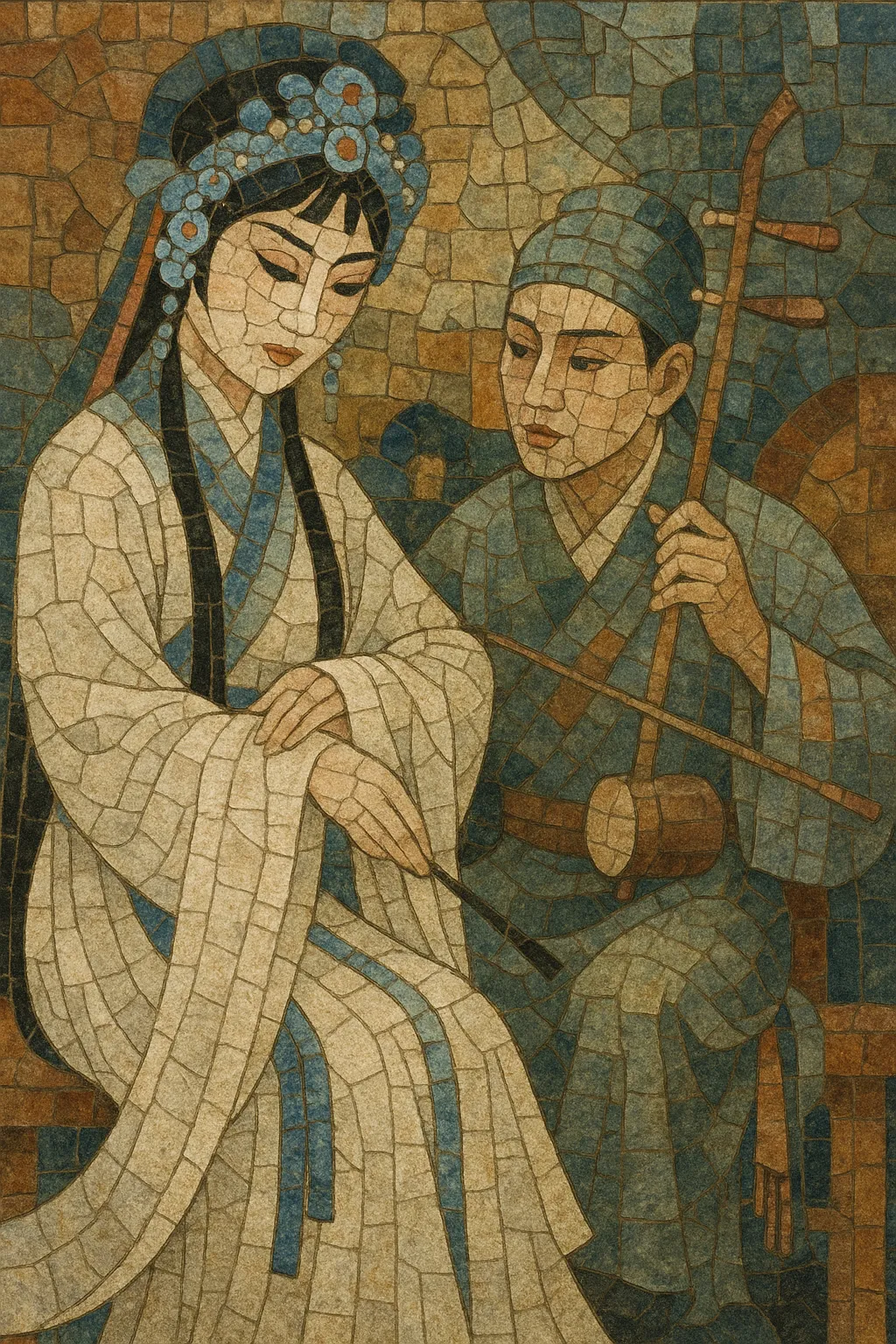Shaoxing opera, better known today as Yue opera (Yueju), is a major regional Chinese opera form that arose in Zhejiang Province and flourished in nearby Shanghai. It is celebrated for its lyrical, soft-edged singing, refined staging, and romantic subject matter, often telling "scholar-and-beauty" stories.
Distinctive features include an elegant, melodious vocal style rooted in Wu Chinese speech patterns, all-female ensembles that became standard in the 1920s–30s, and a chamber-like pit band led by a high-pitched huqin (yuehu/gaohu) with dizi, pipa, yangqin, and light percussion. Compared with Peking opera, Shaoxing/Yue opera favors intimate emotions, graceful movement, and pastel timbres over martial spectacle.
Shaoxing opera emerged in the Shaoxing–Shengzhou area of Zhejiang in the early 1900s, evolving from local folk ballad-singing and narrative performance into a staged operatic form. Early troupes were male, but the style’s gentle tessitura and lyrical sentiment soon drew women performers and audiences, catalyzing a shift toward all-female casts.
In the 1920s–30s, Yue opera relocated its center of gravity to cosmopolitan Shanghai. All-female companies became the hallmark, with actresses specializing in both dan (female) and xiaosheng (young male) roles. Repertoire expanded to romantic tragedies and refined literati tales, while musical language consolidated around pentatonic modes, flexible banqiang rhythms (manban, zhongban, kuaiban), and Wu-dialect inflection.
A constellation of star performers—each associated with distinctive "schools" of vocalism and gesture—fixed the genre’s golden-age sound and look. Film adaptations and recordings popularized masterpieces such as "Liang Shanbo and Zhu Yingtai" (The Butterfly Lovers) and selections from "Dream of the Red Chamber," bringing Yue opera nationwide fame.
Post-1949 institutional support professionalized companies, orchestration, and stagecraft. While the Cultural Revolution refocused operatic production, Yue opera re-emerged with renewed vigor, incorporating modern dramaturgy and lighting while preserving signature singing and movement. Since the 1990s, troupes in Zhejiang and Shanghai have balanced heritage conservation with new works and touring, aided by conservatories, archival projects, and multimedia productions.


